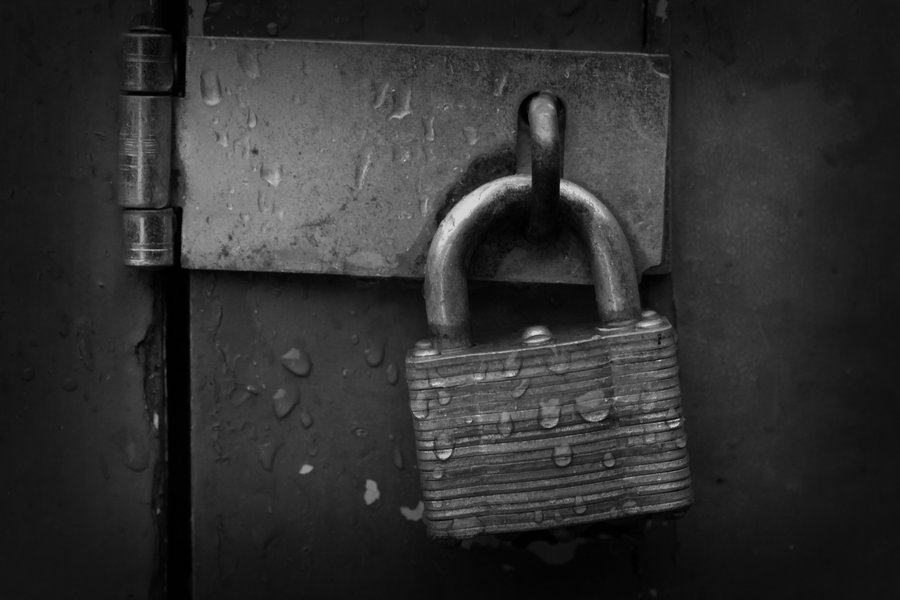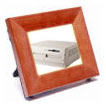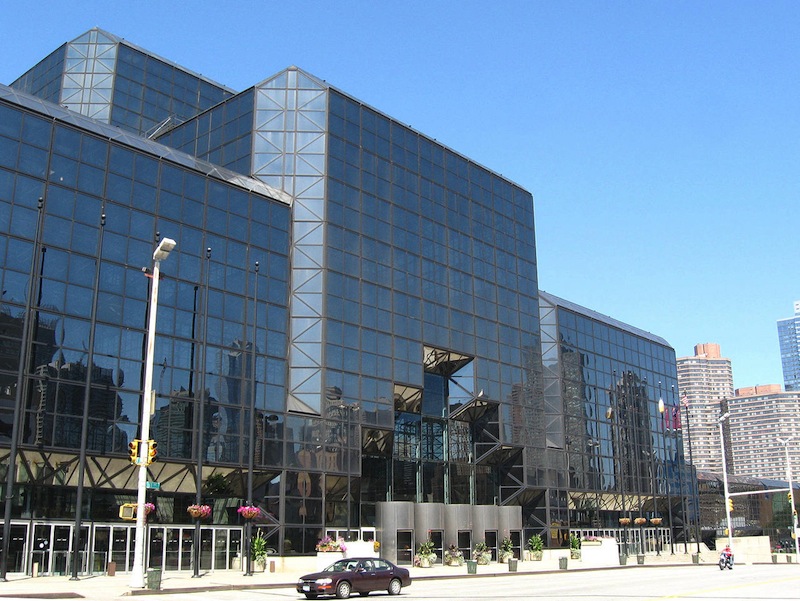You’re not in Kansas anymore, Toto, but don’t panic. Macworld in the Big City can be a breeze. Just don’t act like a tourist.
I’ve said it before, and I’ll say it again — Macworld is part cult revival, part geek-fest, part carnival, and all fun. PC World may be bigger, Internet World may get more buzz, but for good ol’ enthusiasm and camaraderie , nothing outside Heaven’s Gate can even compare. At Macworld, you’re among your own kind; there’s something special about knowing that the Mac-centric phrases that earn you funny looks from your family and friends will more often than not be finished for you by your fellow evangelistas before you can get them out of your mouth. Where else can you wax nostalgic about what a workhorse your old IIci was, or the first time to saw the Graphing Calculator demo? Not even your fellow User Group members are likely to put up with much of that.
The fact that Apple is in a new Golden Era makes the Expo even more exciting. There’s a palpable charge in the air — a realization that really, REALLY cool things are going on here, and that somehow you’re a part of it. At last year’s love fest, yours truly was sitting in the press section during Steve Job’s keynote. As he wrapped up the introduction of the iBook, he announced that a hundred iBook-laden Apple employees were scattered throughout the audience to let us get our hands on the clamshell notebook. Turning to my left, I realized that the person sitting next to me was wearing an Apple polo shirt and had a canvas bag on her lap. “I guess I picked the right seat,” I said to her. “I guess you did,” she replied, and handed me a Tangerine-flavored iBook, hooked up to the web via AirPort. The first site I called up: your favorite Users Group site, of course.
Cool.
I don’t know what’s in store for this year’s Expo, but I’m laying down money that Steve will manage a surprise or two. The iMac line is getting a little long in the tooth, and I’m personally hoping for an Apple-branded PDA, but regardless of the announcements, there’s sure to be a lot to get excited about.
To help you get the most out of your Macworld experience, we’ve put together a few tips. Ignore them if you will, but consider they come from someone who’s been on both sides of the velvet rope quite a few times.
Traveling in New York
C’mon, you live in New Jersey, don’t even think of staying in a Manhattan hotel. Don’t think of driving, either. For me, the only way to cross the Hudson is by rail. The trains today are convenient, cleaner, usually cool and they run frequently — especially during rush hour. Don’t get me wrong, mass transit is no gondola ride through Venice, but it’s a heck of a lot better than fighting midtown traffic, avoiding gridlock and playing chicken with other cars trying to merge into the tunnel. Both NJ Transit and the PATH trains will get you right into Penn Station. From there, it’s a short ride west (I prefer to walk) to the Javits Center. (You can get a schedule for NJ Transit trains here.)
Brown Bag It
Food prices in the Expo center are obscene — only tourists stand on line for an hour to pay six bucks for a small Coke. If you get hungry, walk a couple blocks east and grab a hot dog or gyro from a food cart vendor (the food’s terrific as long as you don’t think about it too much), or hit the local McDonald’s (food’s not as good, but you’ll probably stress about it less). You can always fill up on the candies and snacks some exhibitors give away, but do them the courtesy of picking up some literature or listening to their pitch for a minute or two — it’s good exhibit etiquette. And by all means, never pass up a booth giving away bottled water. It costs $4 at the snack stands and it’s worth its weight in gold after schlepping around the exhibit floor for a couple hours.
You can take it with you — but don’t
There’s a weird urge to bring you Mac with you to an Expo. Maybe it’s akin to cruisin’ Main Street in your cherry muscle car on a Saturday night, or lifting weights on the boardwalk at Muscle Beach. Part desire to preen, part to show off your toys, your connectedness — whatever. If you take no other piece of advice with you to the Javits Center this summer take this one: When that urge to stuff your PowerBook or your iBook in your favorite satchel or bookbag strikes, fight it. Heck, beat it to a pulp. Then kick it while it’s down. Then stomp up and down on it a few times to makes sure it’s dead. The absurd thing is that this is not advice that should even need to be given. The Expo Center is a packed, sweaty place, full of people who will bump you, shove you, and push you out of their way (and let me take this opportunity to apologize for my part in that right now). You will be burdened with flyers, folders, t-shirts, brochures, demo disks and other miscellaneous items of dubious worth until you feel like your arms are going to shear off at the shoulders. The last thing you need to carry is your computer. There are e-mail stations througout the hall, and nobody’s going to send you a message that’s that critical, anyway. Bring a pad of paper and a pen to take notes — heck, don’t even bother with the pen, you can get plenty at the Expo.
The 100-booth dash
With so many exhibitors to see, it’s easy to wind up missing something. Here’s my tactic for making sure I hit all the highlights. Count on doing at least two rounds through the hall. Make your first trip a sort of reconnasaince mission — just breeze through the aisles, stopping for as little as possible, making notes of things that catch your interest. Then, once you’ve worked your way to the end, use your list as an itinerary for your next pass. By this point, you’ll be able to focus on the exhibitors and products that are important to you, and bypass the “filler” in between. You’re bound to find an extra gem or two that you didn’t see on your first go-around, but you’re sure to waste a lot less time. Even better, visit the expo site, print out the exhibitors list, and use that as your starting point — checking off the must-sees, crossing out the must-misses.
How much are you willing to pay for a free t-shirt?
Post-It Note pads, pens, keychains and other tchockes are in abundance at trade shows. T-shirts, however, are rarer now than in years gone by, and competition for them can get pretty fierce — and pretty silly. Here are a couple of the ways companies are capitalizing on the free shirt frenzy — don’t let yourself get caught in their traps.
- The “Visit Our Partners Booth” ploy. – Microsoft is big on this one. The premise is that you get a card or collect a certain amount of plastic coins by visiting different booths around the hall. Bring back the required booty, and you’ll get a free t-shirt. The problem is, you can only get the stamp or coin by listening to the sales pitch at each booth. That can waste a lot of your time, and subject you to some pretty inane banter.
- The “Sit Through Our Presentation for a Chance to Win” game. Some companies hold in-booth demos or “learning sessions.” In reality, they’re usually just sales pitches. In order to entice you to sit through them, they’ll dangle the chance to win one of a small number of t-shirts to those who sit through their spiel. It’s a different variation of the same idea — a freebie (or at least the chance of one) in exchange for your time.
Now I’m not saying that there’s anything wrong with either of these tactics. All I’m saying is that you’ve got to measure the value of a free t-shirt against the value of your time — time you could be using to learn about things that really interest you, or are relevant to your job and/or company. In my experience, it usually turns out to be a really expensive t-shirt.
Live and learn
If you’re lucky enough to have been able to scrounge or buy a conferences badge, by all means, take advantage of them. The quality of Macworld Expo presentations is usually top-notch, with the A-list of the Mac elite showing off their skills — and hawking their books. The educational conferences are usually excellent as well. Last year’s Photoshop session made me feel like an absolute newbie, but reignited my enthusiasm for a program I had been seriously under-utilizing. Watch out for the sales presentations-in-disguise, though. These are usually held at the vendor’s booth and are always free. Like the t-shirt ploy, it’s primarily designed to get you to sit through a sales pitch for as long as possible.
Life on the streets
Our last bit of advice isn’t meant for the Expo floor, but rather for outside the Javits Center. New York is a far more tourist-friendly place, but it’s still a big city, so use common sense. Take your badge off when outside the center. Your bulging tote bags may still give you away, but there’s no need to advertise the fact that you’re an out-of-towner. Stay in heavily trafficked, well-lit areas, and don’t give money to strangers. The story about the guy who got mugged on his way home to Virginia leaving him just a few bucks shy of train fare home (which he’ll gladly forward to you if you give him your address) may be heart-breaking, but it just ain’t so. If you’re uncomfortable giving him the brush-off, point him back towards the Javits Center and tell him to contact the authorities there. Then keep your eyes forward and walk away.
Heck, if you were that gullible, you’d be running Windows.


